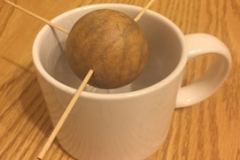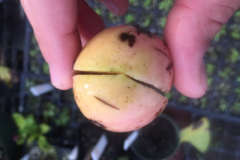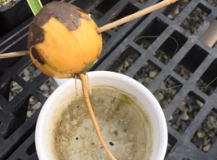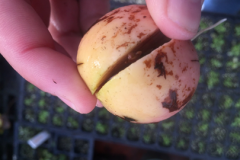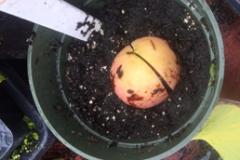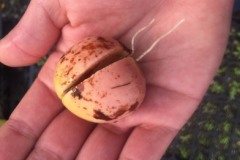
Growing Avocados; What is the Best Way?
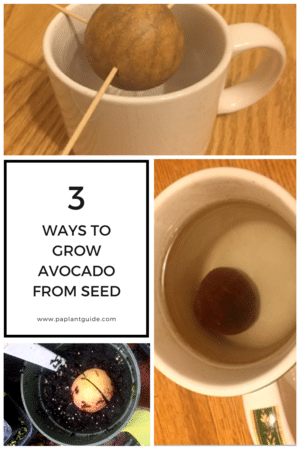
One of my friends recently asked; If you were tasked with growing one plant for the rest of your life in order to contribute to society, what would it be?
After some thought, I responded that it would be some type of fruit tree. Having just recently purchased avocados, and being pressed for more details, I blurted out the avocado and proceeded to validate my choice.
I must agree with the Huffington Post, avocados are the best fruit in the world. Not only are they delicious, but they are a source of many essential nutrients.
Wouldn’t it be convenient to have a supply of avocados in your home? Before you throw out the seed from the next avocado you eat, consider turning that seed into an avocado tree.
The following guide is based on a propagation experiment of avocado my classmate conducted as part of the Professional Gardening Program in our Plant Propagation class. It took into account three different methods of growing avocado.
I will first present the experiment, and then we can dig into the dirt with a more detailed description of Persea americana and its growing methods.
1. Growing Avocado Partially Submerged
The first method included partially submerging the seed in water. A popular method among homeowners, there are even devices such as the AvoSeedo to facilitate the process.
Convenient, but unnecessary, the seed is easily penetrated with toothpicks or anything that helps the seed float in water.
Gently remove the pit of the fruit, ensuring the seed doesn’t get injured in the process.
Prior to inserting the toothpicks, wash the avocado seed with warm water and let it briefly dry out. Next, orient the seed so the more acute side is up.
We want to allow space for the radicle (first part of the seedling) to emerge. Keeping this in mind, place toothpicks horizontally in the seed so the seed is submerged in about 1″ of water.
The next step is to suspend the seed in water. You can use a glass, coffee mug or anything that will hold the avocado in water. Once that is done, place the cup and your seed in a well-lit area and get ready for the feelings of anticipation.
While you wait, change the water every one or two days to prevent any pathogens from infecting the seed. You should start seeing signs of germination within two weeks.
Above you can see the progression of the seed development when partially submerged in water. The second picture shows the seed splitting open after 16 days. After another 4 weeks, the taproot should reach to be about 6″ long. At this point, you can let the seed develop further in the water, but I suggest potting it in well-draining media which I will explain why when we discuss the experiment. We used ProMix High Porosity Soilless Media.
2. Growing Avocado In Potting Mix
The next method my classmate tried was using potting media to propagate the seed. Although a slower process, the seed split open at about the same time as the partially submerged one but didn’t start producing roots until 10 days later.
Using this method requires you to be vigilant about keeping the potting media moist. Using a well draining potting mix and an appropriate potting container is also crucial for germination success. A taller container has more gravitational forces acting on it and will drain more freely than a shallow one, preventing any root rot pathogens from developing.
Roots started emerging 10 days after the seed split, reaching 2″ long in 40 days. Notice how this propagation method produces shorter roots rather than a large taproot. This contrasting root system can be attributed to the different media it was grown in.
3. Growing Avocado Totally Submerged
Finally, the seed grown totally submerged in water sat there, and sat there, and finally after two months!! It shriveled and died..In conclusion, do not throw your avocado in a cup of water and expect it to germinate.
However, if you use the first two methods, your seedling will become an attractive houseplant in no time!

 Discussion
Discussion
Seeds germinate when certain environmental ques signal hormonal changes inside the seed embryo. Persea americana has certain physiological germination inhibitors that can be overcome through the use of a pre-chill or pre-heat period that’s based on the plant’s nativity.
The Avocado cultivars in the experiment didn’t require anything beside water to break their dormancy. As soon as the seed senses water, the imbibition process begins, swelling the seed and helping the radicle emerge.
While the seeds grown in soil and partially submerged in water germinated and produced a plant, the one that was just laying in water simply suffocated. Without oxygen, cellular respiration cannot happen and the seed cannot release stored fats and carbohydrates to germinate.
Although the seed partially submerged produced a significant taproot because the seed was receiving oxygen and generating energy for the root, once the food reserves of the seedlng were depleted the roots would also suffocate. This is why I suggested potting the germinated seed in a container.
The potted seed exhibited desirable short dense roots due to the availability of nutrients near the base of the seed. Roots will proliferate in areas of higher nutrient concentrations, particularly Phosphorous, by producing multiple lateral roots along with root hairs that create more surface area for nutrient and water uptake.
Therefore, growing a Persea americana from seed should be done in soil instead of using the water method. This will result in a healthier and more fibrous root structure that can sustain a tree which grows up to 80′ in the landscape. Commercial avocado growers use a grafting method of growing desirable fruit on rootstock of avocado cultivars that are resistant to certain diseases and that are well suited for their region.
Grafting is a really interesting subject that is best left for another article, but if you want to splice some cambiums read the information in the link provided.
Avocado plant care after the seed has produced true leaves requires some plant growth regulation through frequent pinching or applying PGR products. This will keep the internodes of your avocado plant more compact and create a structurally sound plant specimen.
Only bad part about growing avocado from seed is it will test your patience. Grown from seed rather than rootstock, you will need to wait at least 6 years to harvest any fruit! Yes this is unfortunate, and fruit is not always guaranteed, but it still makes a lovely houseplant without bearing any fruit. I suggest buying a grafted avocado tree from a nursery that can assist you with picking the right cultivar for your area.
I’d love to hear about your experiences growing avocados and if you have any pictures of your plants please share them! The photos in the article are attributed to my classmate Tyler Bozzuto. Links provided are the sources referenced.
-Shem R.



